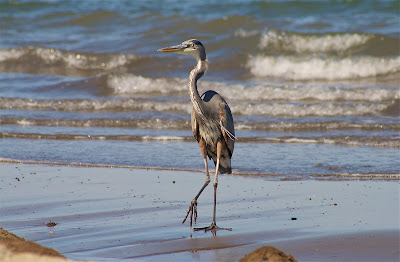Freshwater Sharks - Snorkeling in frigid waters for a species at-risk
Bull Trout - A species at-risk from Levi Old on Vimeo.
By Levi Old
On a dead-still summer night, I army-crawl upstream.
“We have a large adult!” says Jen.
I rise to one knee and pull the fogged snorkel mask off my
head. “A big one?” I mumble in a haze.
“Yeah, really
big. Much larger than I’ve ever seen this far up the creek,” she replies,
pointing to where it kicks its caudal fin gently against the downstream flow.
“It’s right there beside you.”
I cinch the
mask on my face, place the snorkel in my mouth, and dunk back into the frigid
water: Twenty-six inches of wildness.
Jen pops her head out of the water and says, “Isn’t that just a beautiful creature?”
She snorkels one side of the creek and I snorkel the other.
An assistant in waders walks the creek, tallies our fish sightings and makes
sure we do not go hypothermic.
Jen O’Reilly, a
biologist for the US Fish and Wildlife Service, leads the recovery effort for
the Odell Lake population of bull trout, a Threatened Species
under the Endangered Species Act. The recovery team consists of US Forest
Service, Oregon Department of Fish and Wildlife, and Trout Unlimited. In
order to monitor recovery of bull trout, biologists conducts an annual juvenile
count in Trapper Creek, the only known spawning location for this population.
Trapper Creek is a tributary to Odell Lake. In the shadow of
Oregon’s Diamond Peak, the lake lies in a glacier-carved basin physically
detached from the Deschutes River by a 5500 year-old lava flow. The flow
enclosed the lake, genetically isolating this population of bull trout.
At midnight this past July, 10 of us in dry suits and thick neoprene hoodies shimmied up different reaches (Fig. 1) of Trapper Creek. Shallow in most places, the snorkel is more of a crawl and scramble than a leisurely swim upstream. Even in mid-summer Trapper Creek is icy.
We closely observed the nooks of each piece of in-stream wood and dove into pools where rapids converged and bubbles enveloped our sightlines. We held dive lights, counted each fish and estimated its size class. We kept our eyes peeled for the creek’s bull trout.
Named for their broad heads, bull trout (Salvelinus confluentus) serve as apex predators in aquatic systems of the West. Often called “Dolly Varden (S. malma),” they are in fact a separate species. Bull trout exist in less than half their historic range and prefer clean, cold waters. As a member of the char genus, they grow to be shark-like beasts in comparison to their trout relatives. Bull trout can measure up to 41 inches and weigh as much as 42 pounds.
The Trapper Creek bull trout population is known as the only
adfluvial, non-reservoir population of bull trout
in Oregon. During the 20th century, the building of railroads,
construction of revetments, and removal of woody debris turned the creek into a
large ditch of rushing water, unsuitable for spawning bull trout.
In 2003, this all changed. The recovery team restored the
channel to increase spawning and rearing habitat by deconstructing revetments,
placing woody debris and rebuilding a meandering channel. The annual snorkel
count of juvenile bull trout increased from 26 in 1996 to 150 in 2005.
Restoring, sustaining and monitoring native habitat is crucial to the survival
of this iconic species.
If you find yourself on western waters, keep an eye out for
these stream predators. Light spots of yellow, red
and orange cover their dark bodies, and a white margin can be found on the
leading edge of their ventral fins. And watch out, anglers: they will steal a
hooked fish right off of your line.
Please enjoy the video: Bull Trout
Sources:
Montana Water Center. (2009). Trapper
Creek. Retrieved on October 16, 2014, from
http://wildfish.montana.edu/Cases/browse_details.asp?ProjectID=36.
Richardson, Shannon and Jacobs, Steve. (2010).
Progress Reports. Retrieved on October 16, 2014,
from
http://oregonstate.edu/dept/ODFW/NativeFish/pdf_files/Odell_BT_Report_final.pdf.


Comments